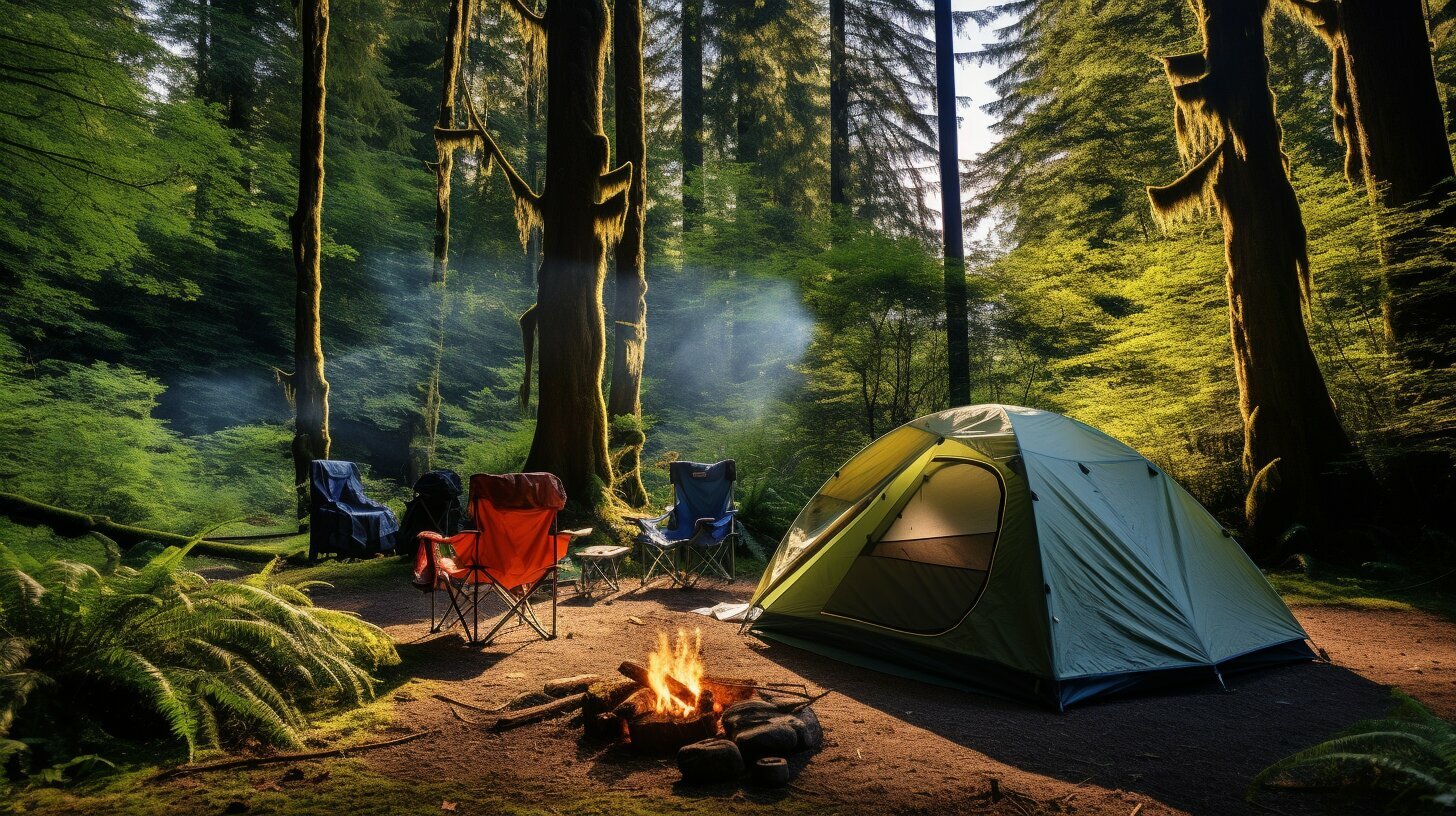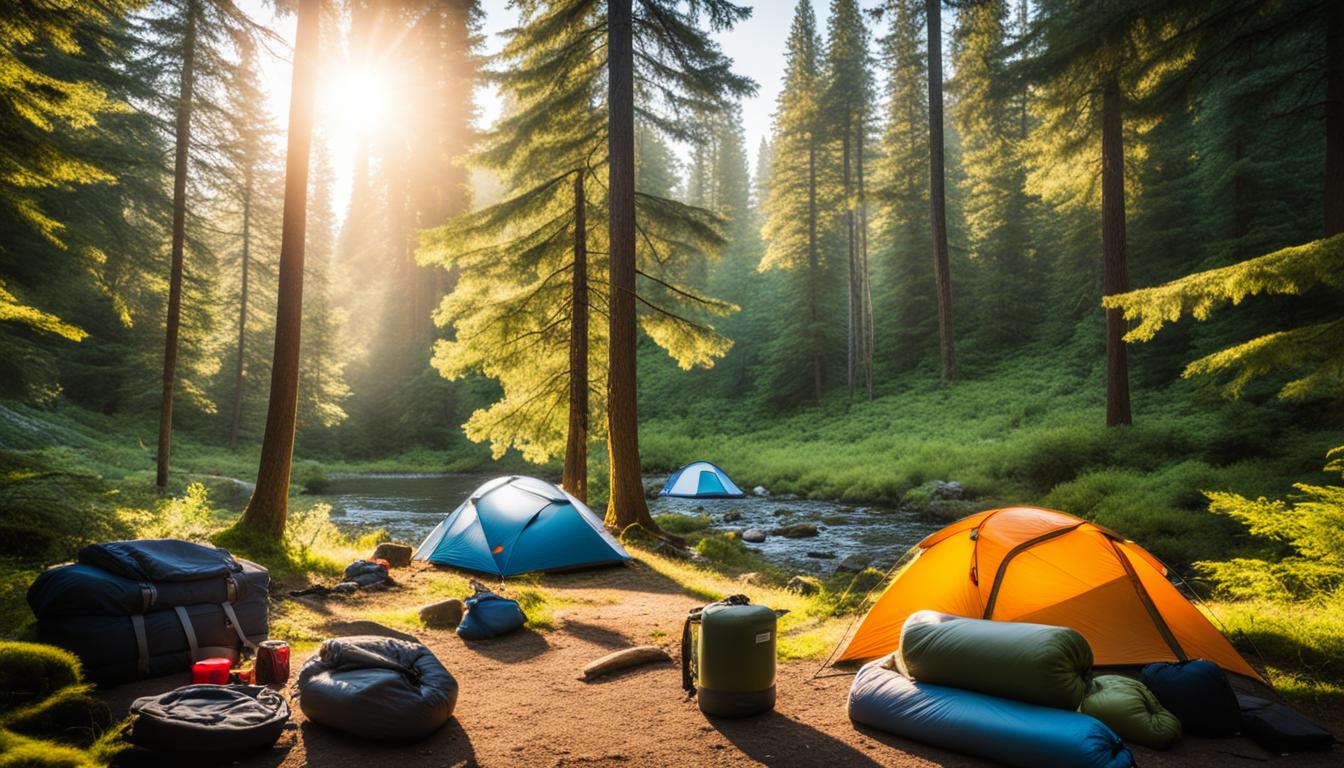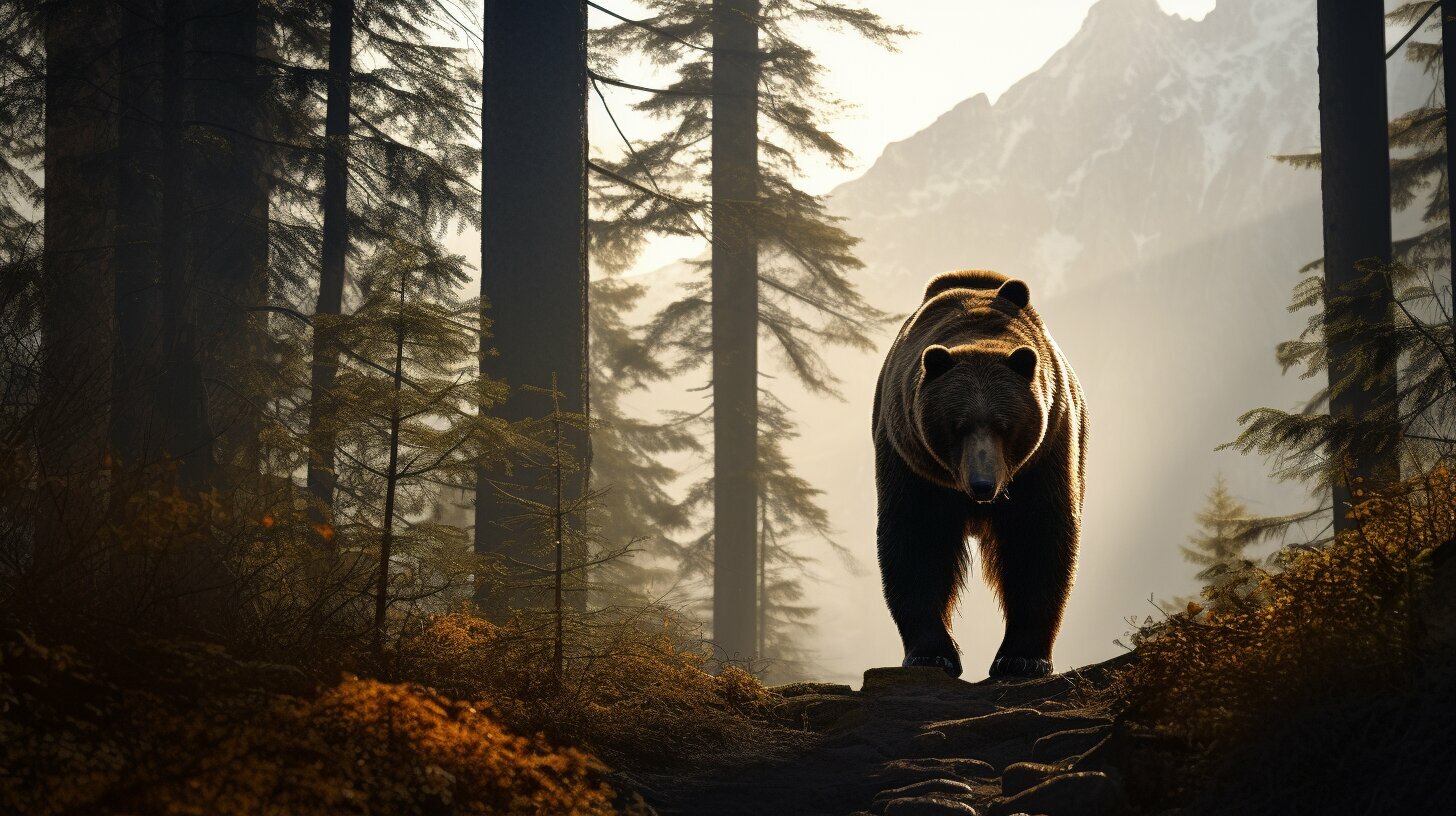Are you looking for an adventure that combines the beauty of nature with the excitement of the great outdoors? Look no further than camping in national parks. Whether you’re an experienced camper or new to the scene, national parks offer some of the most breathtaking camping sites in the country. From towering mountains and serene lakes to lush forests and abundant wildlife, camping in national parks is an experience unlike any other.
So why not plan your next camping trip in a national park? In this ultimate guide, we’ll provide you with all the information you need to know to make your trip unforgettable. We’ll cover the top camping spots in national parks, essential camping gear to bring with you, important rules and regulations to follow, and valuable tips for a safe and enjoyable experience. Plus, we’ll highlight exciting activities and adventures that await you in these natural wonders.
Key Takeaways
- Camping in national parks offers a unique and unforgettable outdoor experience.
- Top national park camping spots feature diverse landscapes and abundant wildlife.
- Essential camping gear is necessary for a comfortable camping trip in national parks.
- Rules and regulations must be followed to preserve and protect national parks.
- Camping safety is of utmost importance in national parks.
- Obtaining permits in advance is essential for popular national park camping areas.
- Exciting activities await you in national parks, from hiking and fishing to stargazing and more.
Exploring the Best Camping Spots in National Parks
If you’re looking for the ultimate outdoor adventure, camping in national parks is hard to beat. The United States is home to an incredible array of national parks, each boasting its unique landscapes, wildlife, and recreational activities, making it difficult to choose where to pitch your tent. Here’s a guide to the best camping spots in national parks to help you plan your next camping adventure.
1. Yosemite National Park, California
Yosemite National Park has some of the most breathtaking natural scenery in the world and is one of the most popular national parks for camping. Campsites are available throughout the park, providing visitors with access to stunning views of granite cliffs, waterfalls, and ancient Sequoia trees. The park offers a variety of camping experiences, ranging from RV parks to backcountry camping.
Disclosure: When you buy through links on our site, we may earn an affiliate commission.
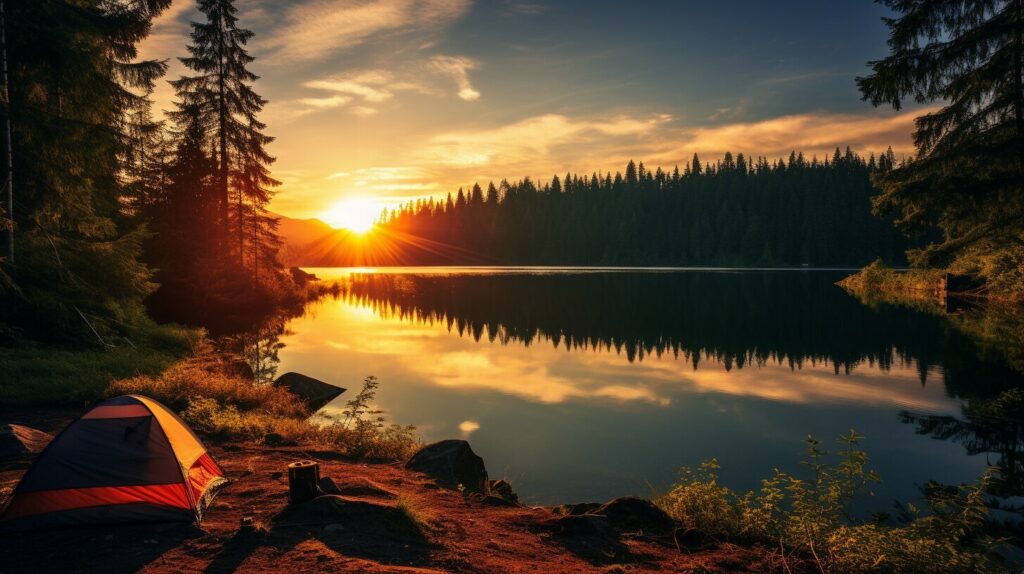
2. Grand Canyon National Park, Arizona
The Grand Canyon is an awe-inspiring natural wonder and one of the world’s most iconic landscapes. Camping here is an unforgettable experience, with campsites perched on the rim providing stunning views of the canyon. The park offers a range of camping options, including RV parks and backcountry camping, each providing easy access to the park’s incredible hiking trails and outdoor activities.
3. Zion National Park, Utah
Zion National Park is another popular destination for camping, with some of the most picturesque landscapes in the American Southwest. The park offers a range of camping options, from developed campgrounds to backcountry camping, providing visitors with easy access to hiking trails, rock climbing, and other outdoor activities.
These are just a few of the many incredible camping spots available in national parks across the United States. Whether you’re a seasoned camper or a first-timer, camping in national parks is an adventure you won’t forget.
Essential Camping Gear for National Park Trips
When preparing for a camping trip to a national park, having the right gear is crucial to ensure a comfortable and enjoyable experience. Here are some essential camping items to consider packing:
- Tent: Your tent will be your home away from home during your camping trip, so choose one that is sturdy, weather-resistant, and spacious enough to accommodate all members of your group.
- Sleeping bag and pad: Select a sleeping bag that is rated for the temperatures you will encounter at your destination. A sleeping pad will provide additional insulation and cushioning for a good night’s sleep.
- Cooking equipment: Don’t forget to bring a portable stove, fuel, and cookware for preparing meals. You may also want to bring a cooler to keep perishable items fresh.
- Lantern or flashlight: These items will be essential for navigating your campsite at night and lighting up your tent.
- First aid kit: It’s important to be prepared for any emergencies that may arise during your trip. A basic first aid kit should include bandages, antiseptic, pain relievers, and any necessary prescription medications.
- Outdoor clothing: Be sure to pack appropriate clothing for the weather and activities you have planned. This may include rain gear, hiking boots, and warm layers for colder temperatures.
- Personal hygiene items: Bring items such as soap, toothpaste, and wipes to stay clean and fresh during your camping trip.
- Insect repellent: Mosquitoes and other bugs can be a nuisance in the great outdoors. Be sure to bring insect repellent to keep them at bay.
By packing these essential items, you’ll be well-prepared to enjoy your camping trip to a national park.
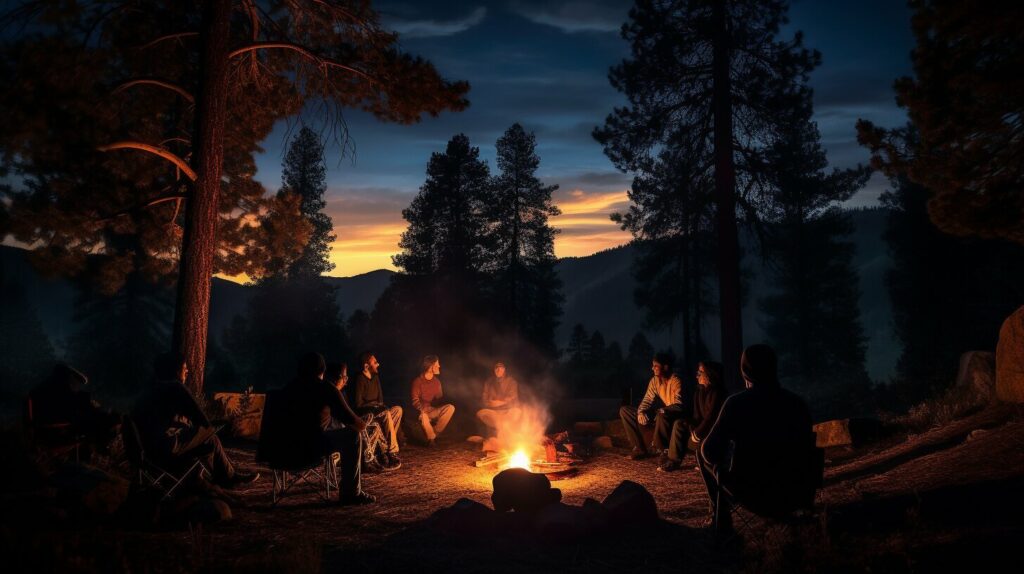
Camping Rules and Regulations in National Parks
Camping in national parks can be an incredible experience, but it’s important to be aware of the rules and regulations in place to ensure the safety and preservation of these natural wonders. Here are some important guidelines to follow:
| Rule | Description |
|---|---|
| Reservation | Reserve a spot for camping in advance to avoid disappointment, as many popular campsites fill up quickly. |
| Campfires | Follow campfire regulations in each park and use designated fire rings. Never leave a fire unattended and ensure it is fully extinguished before leaving. |
| Waste disposal | Dispose of waste properly by using trash receptacles or carrying it out with you. Do not leave food or garbage on the ground as it can attract wildlife. |
| Wildlife interaction | Keep a safe distance from all wildlife. Do not feed or approach them as it can cause harm to both the animals and humans. |
Additionally, be sure to follow specific rules for the park you’re camping in. Regulations can vary greatly depending on location, so do your research beforehand to ensure a smooth and enjoyable experience.
Remember that the purpose of these rules and regulations is to protect the natural environment and ensure the safety of campers and wildlife alike. By following them, you can help preserve these beautiful places for future generations to enjoy.
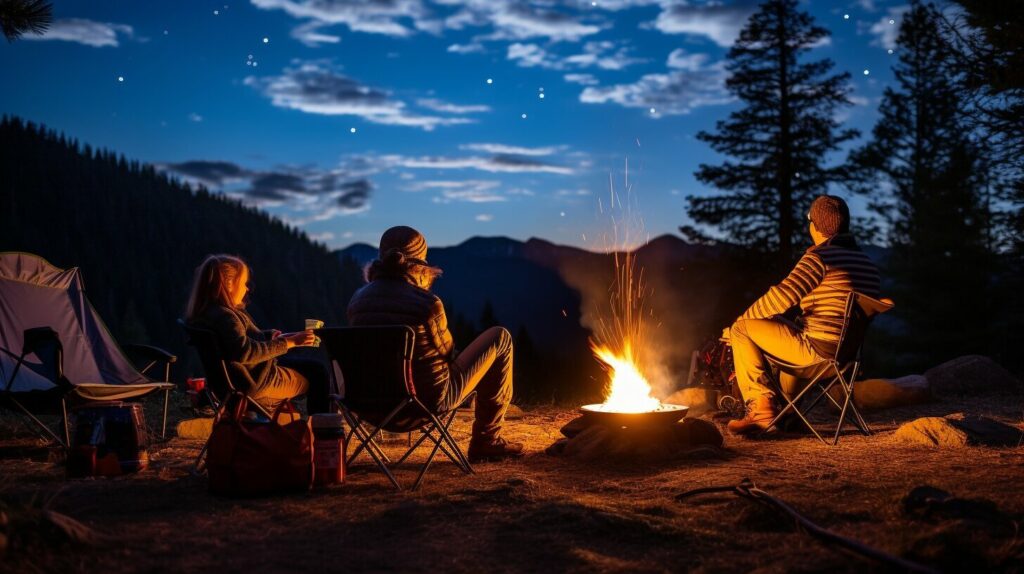
Camping Tips for an Enjoyable National Park Experience
Embarking on a camping trip in a national park can be an unforgettable adventure. To ensure you have a safe and enjoyable experience, here are some essential camping tips:
- Plan ahead: Research the park and its camping facilities, make reservations in advance, and prepare for the weather conditions.
- Stay safe: Always follow park rules and regulations, carry a first aid kit and emergency supplies, and inform someone of your itinerary.
- Respect nature: Leave no trace by properly disposing of waste, avoiding disturbing wildlife, and being mindful of your impact on the environment.
- Maximize outdoor activities: National parks offer a variety of outdoor activities such as hiking, fishing, and stargazing. Take advantage of these opportunities to make the most of your camping experience.
- Bring appropriate gear: Pack essential camping gear such as a tent, sleeping bag, cooking equipment, and outdoor clothing. Don’t forget insect repellent and sunscreen.
- Be flexible: National parks can be unpredictable, so be adaptable and open to changes in plans. Always have a backup plan and be willing to adjust your itinerary.
By following these camping tips, you’ll be well-prepared for an amazing national park trip. Remember to take care of the environment so that future generations can enjoy these natural wonders.
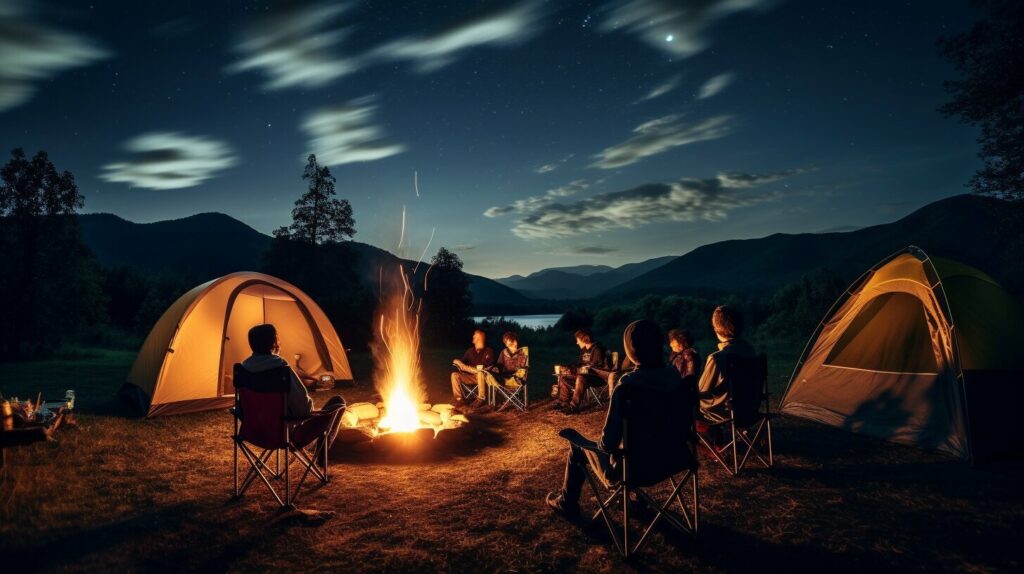
Wilderness Camping: Discovering the Untouched Beauty of National Parks
For those seeking a more rugged and secluded camping experience, wilderness camping in national parks is the perfect adventure. It allows you to escape the hustle and bustle of crowded campsites and explore the untouched beauty of nature.
However, before embarking on a wilderness camping trip, it’s important to understand the regulations and precautions required to ensure a safe and enjoyable experience.
Firstly, you must obtain a wilderness camping permit from the park’s ranger station or visitor center. These permits are limited and often require advanced reservations. It’s important to check the park’s website for specific rules and regulations regarding wilderness camping, as some parks have different requirements.
When packing for your wilderness camping trip, it’s crucial to bring all necessary equipment, including a sturdy tent, sleeping bag, and camping stove. Consider packing lightweight and compact gear, as you will need to carry everything with you on your trek.
Additionally, you must be aware of the potential hazards that come with wilderness camping. These include encounters with wildlife, unpredictable weather conditions, and challenging terrain. It’s important to research the park’s wildlife and weather patterns before your trip and bring appropriate gear and precautions, such as bear spray and rain gear.
While wilderness camping can be more challenging than traditional camping, the rewards are well worth it. You’ll have the opportunity to witness breathtaking scenery, experience the tranquility of untouched nature, and challenge yourself both physically and mentally.
So why not plan your next camping trip in a national park’s wilderness area? You’ll create unforgettable memories and have the chance to reconnect with nature in a way that few other experiences can provide.
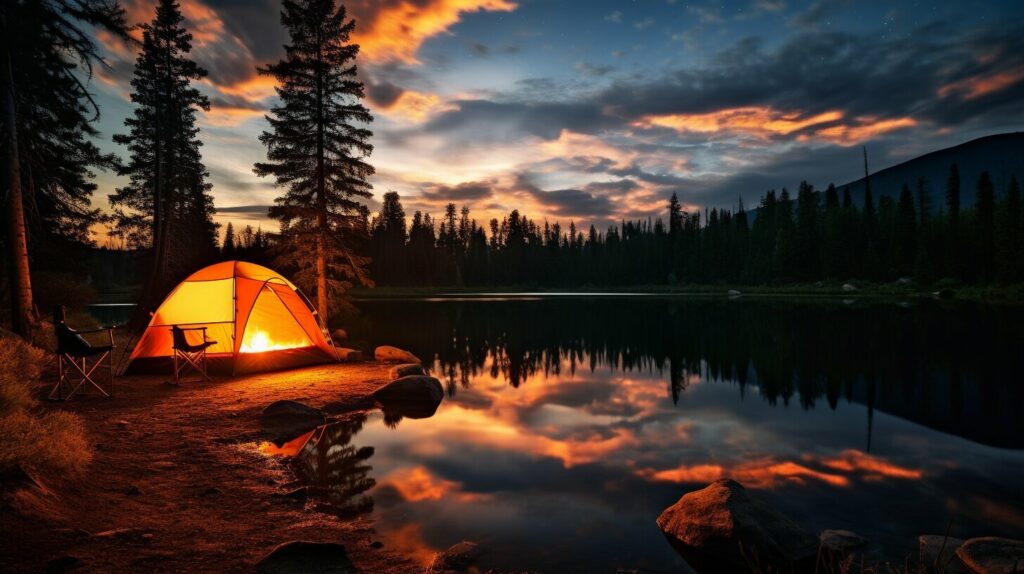
Camping Safety in National Parks: Ensuring a Secure Experience
Camping in national parks can be a fantastic way to experience the great outdoors and make unforgettable memories. However, it’s crucial to keep safety in mind at all times. The following tips will help you stay safe and secure during your camping trip:
Be Prepared for Wildlife Encounters
Many national parks are home to a variety of wildlife, from deer and elk to bears and mountain lions. Remember to always keep a safe distance from animals and never feed them. It’s essential to store your food and trash securely and away from your campsite to avoid attracting wildlife. Additionally, carry bear spray and know how to use it in case of an emergency.
Stay Safe in Changing Weather Conditions
Weather conditions can change quickly in national parks, so it’s crucial to stay prepared. Bring appropriate clothing and gear for varying weather, including rain and cold temperatures. Keep an eye on weather forecasts before and during your trip, and be prepared to adjust your plans accordingly.
Pack a First Aid Kit
Accidents can happen while camping, so it’s vital to have a first aid kit on hand. The kit should include essential items like bandages, antiseptic, pain relievers, and any necessary prescriptions. Be sure to familiarize yourself with the contents of your kit and how to use them before you leave.
Know Emergency Protocols
Before leaving for your camping trip, research emergency protocols for the national park you’ll be visiting. Know how to contact park rangers or emergency services and the nearest medical facilities. Familiarize yourself with the location of emergency exits and shelters in case of evacuation.
Camp with a Group
When possible, camp with a group. There’s safety in numbers, and having more people around can help deter wildlife from approaching your campsite. Additionally, if someone is injured or sick, having a group can make it easier to manage the situation.
By following these camping safety tips, you can ensure a secure and enjoyable experience in national parks. Remember to prioritize safety and be prepared for any curveballs that come your way.
Obtaining Camping Permits for National Parks
To ensure that you have a safe and enjoyable camping trip in national parks, it is essential that you obtain the necessary camping permits before setting up camp. Permits must be obtained for camping in designated campsites, wilderness areas, and backcountry camping areas.
Camping permits for national parks can be obtained through the park’s designated reservation system, which can be accessed online or by phone. Some national parks also allow for walk-up permits, but it is highly recommended that you reserve your spot in advance, especially during peak camping seasons.
| Type of Camping Permit | Cost | Duration |
|---|---|---|
| Campsite Reservation | Varies by Park | 1-14 Nights |
| Wilderness Permit | Free | Varies by Park |
| Backcountry Permit | Varies by Park | 1-14 Nights |
The cost of camping permits for national parks varies depending on the park and the type of permit required. Some wilderness permits are free, while others require a fee. Campsite reservations typically cost between $10-$30 per night, depending on the location and amenities provided. Backcountry camping permits can also vary in cost depending on the park and the length of your trip.
When obtaining your camping permit, be sure to read and understand the rules and regulations set by the park. These can include fire restrictions, food storage requirements, and animal encounters. It is important to follow these rules to ensure everyone’s safety and to protect the natural environment.
Remember to make your camping reservation well in advance to secure your spot and avoid disappointment. With the right permits and equipment, you can enjoy a memorable camping experience in the beautiful national parks of the United States.
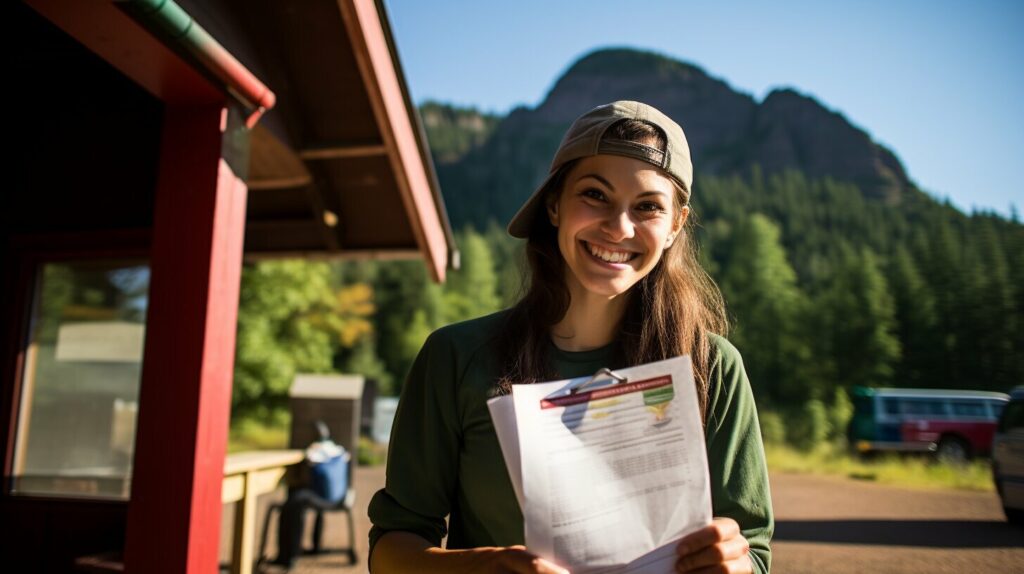
Exciting Camping Activities for a Memorable National Park Trip
Camping in national parks allows you to immerse yourself in the great outdoors, surrounded by breathtaking scenery and diverse wildlife. But that’s not all – national parks offer a variety of exciting activities to make your camping trip even more memorable. Here are some of the top camping activities to consider during your next national park adventure:
- Hiking: National parks are known for their stunning hiking trails, ranging from easy strolls to challenging climbs. Lace up your hiking boots and explore the natural wonders around you. Don’t forget to bring plenty of water, snacks, and a trail map.
- Wildlife Spotting: National parks are home to an array of animals, from birds and deer to bears and mountain lions. Bring binoculars and a camera to get a closer look while keeping a safe distance. Remember to always respect wildlife and never feed them.
- Fishing: Many national parks offer fishing opportunities in rivers and lakes. Check ahead to see if you need a fishing permit and what species are available. Bring your own gear or rent equipment from a local outfitter.
- Stargazing: National parks are prime locations for stargazing due to their remote locations and lack of light pollution. Bring a star chart or download a stargazing app to identify constellations and planets.
- Canoeing/Kayaking: Many national parks offer opportunities to paddle down a river or across a lake. Rent equipment or bring your own, but always wear a life vest and check for any navigational hazards.
- Rock Climbing: For the adventurous camper, some national parks offer rock climbing experiences with stunning views. However, this activity requires proper equipment and training. Consider hiring a guide or taking a course before attempting to climb.
- Horseback Riding: Some national parks offer guided horseback riding tours, providing a unique perspective of the park’s landscapes and wildlife. Check ahead for availability and any age or weight restrictions.
No matter what activity you choose, always make safety your top priority. Be aware of weather conditions, wear appropriate clothing and footwear, and never take unnecessary risks. With proper planning and preparation, your camping trip in national parks can be an unforgettable adventure.
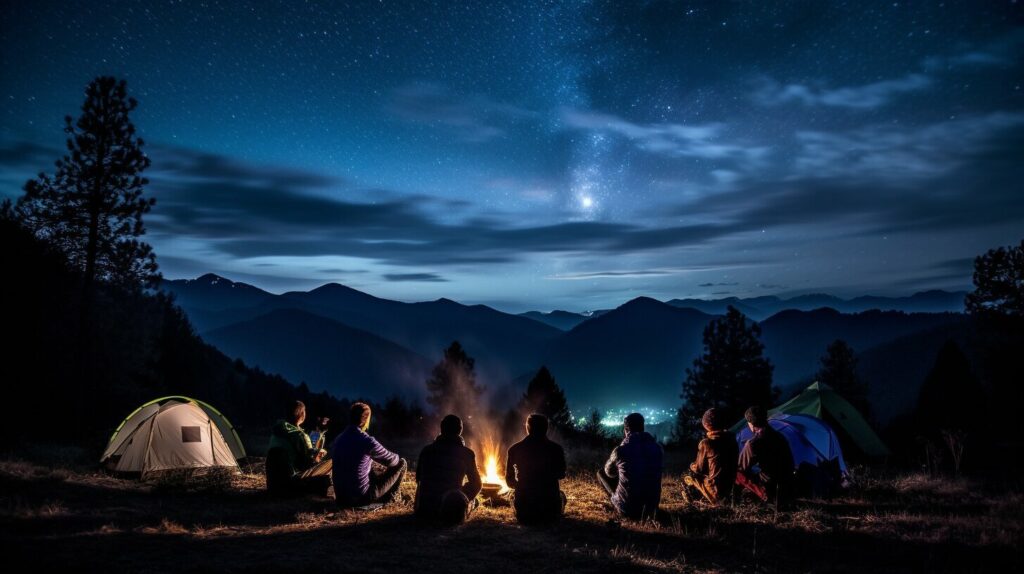
Conclusion
Camping in national parks offers an unforgettable adventure, allowing you to connect with nature, explore stunning landscapes, and engage in exciting outdoor activities. By following the tips and guidelines provided in this ultimate guide, you can ensure a safe, enjoyable, and memorable experience.
Remember to pack all the essential camping gear, be aware of the rules and regulations governing national parks, and take necessary precautions when camping in the wilderness. Obtaining camping permits in advance will help secure your spot in popular camping areas, and engaging in various outdoor activities will enhance your experience.
Most importantly, it’s vital to preserve and protect these natural treasures. Always practice Leave No Trace principles, respect wildlife and their habitats, and adhere to park rules and regulations. By doing so, you can ensure that future generations can also enjoy the beauty and wonders of our national parks.
FAQ
Q: What are the best camping spots in national parks?
A: The best camping spots in national parks vary depending on personal preferences and the specific park you are visiting. Some popular options include Yosemite National Park, Grand Canyon National Park, and Glacier National Park.
Q: What camping gear should I bring for a national park trip?
A: Essential camping gear for a national park trip includes a tent, sleeping bag, cooking equipment, outdoor clothing, and other necessary items for your comfort and safety.
Q: What are the camping rules and regulations in national parks?
A: Camping rules and regulations in national parks cover reservations, campfire regulations, waste disposal, and wildlife interactions. It is important to familiarize yourself with these rules to ensure a positive and responsible camping experience.
Q: What are some camping tips for national park trips?
A: Some camping tips for national park trips include planning ahead, staying safe, respecting nature, and making the most of outdoor activities available. These tips will help you have an enjoyable and memorable camping experience.
Q: What is wilderness camping in national parks?
A: Wilderness camping in national parks involves venturing into remote and untouched areas of the parks. It requires permits and adherence to specific regulations to minimize impact on the environment while enjoying the natural beauty of these areas.
Q: How can I ensure camping safety in national parks?
A: Ensuring camping safety in national parks involves being prepared for wildlife encounters, being aware of weather conditions, carrying a first aid kit, and knowing emergency protocols. Taking necessary precautions will help you have a secure camping experience.
Q: How do I obtain camping permits for national parks?
A: Camping permits for national parks can be obtained through the park’s reservation system. Be sure to check availability, secure your permit in advance, and pay any required fees to ensure your spot in popular camping areas.
Q: What activities can I enjoy while camping in national parks?
A: While camping in national parks, you can enjoy a variety of activities such as hiking trails, wildlife spotting, fishing, stargazing, and other outdoor adventures. These activities enhance your overall national park camping experience.

